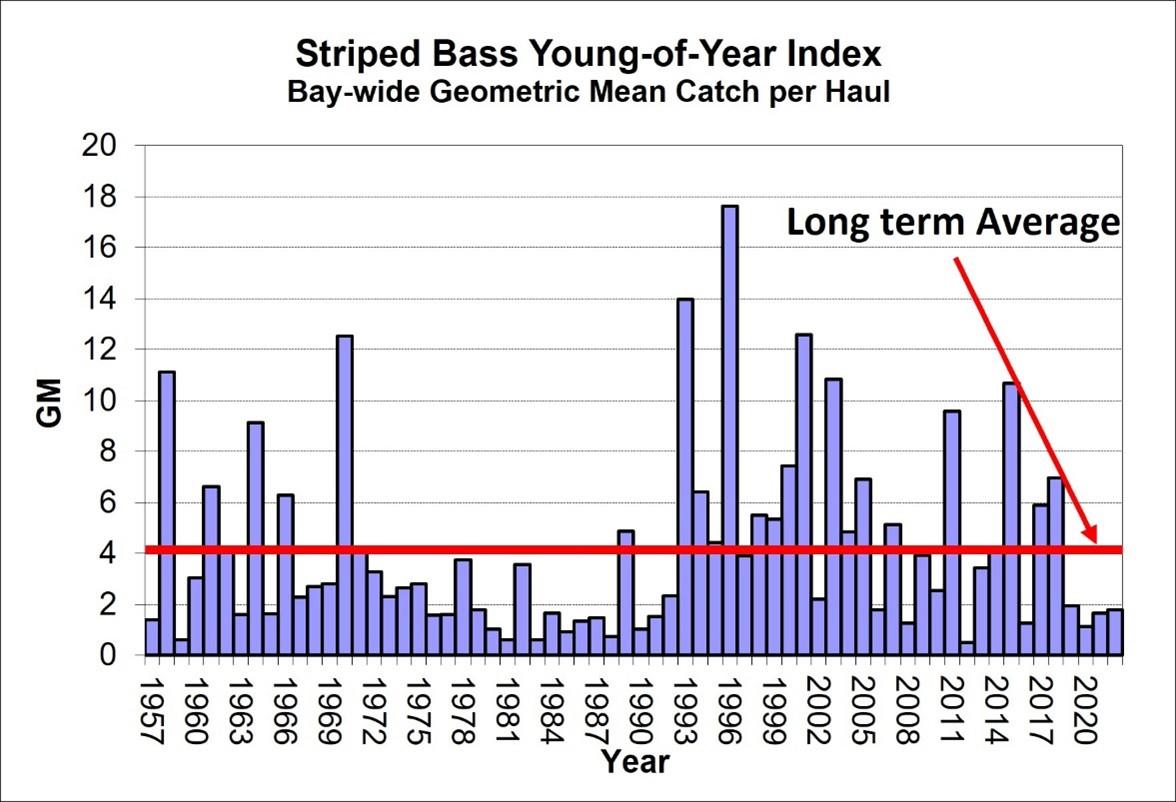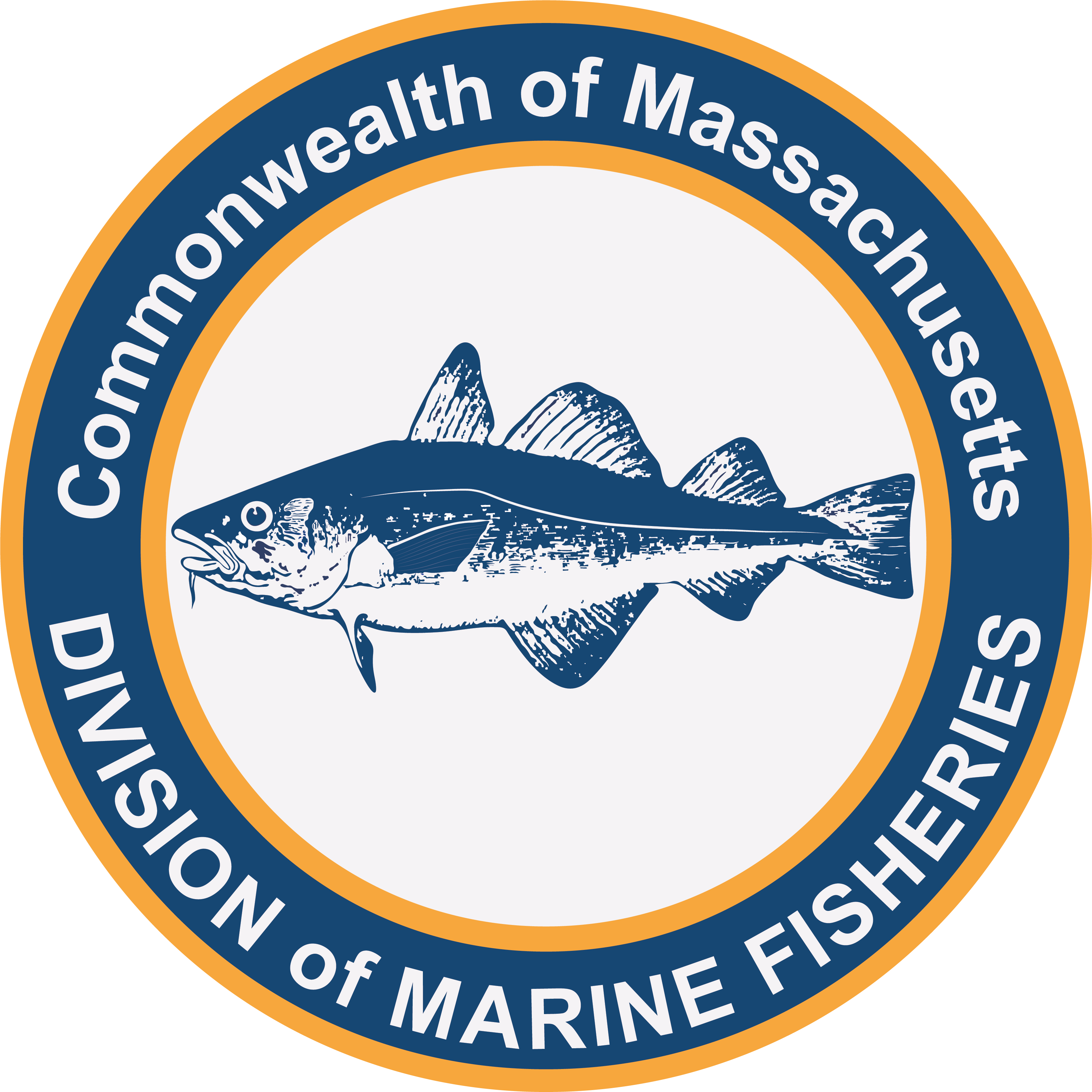- Division of Marine Fisheries

On May 2, 2023, the Atlantic States Marine Fisheries Commission (ASMFC) Striped Bass Management Board (Board) voted to take emergency action to implement a 31” maximum size limit for all striped bass recreational fisheries. This results in a 1 fish at 28” to less than 31” size slot limit for all ocean recreational fisheries coastwide, including Massachusetts. To be in compliance with the Emergency Action, the Massachusetts Division of Marine Fisheries enacted emergency recreational regulations to change the maximum length limit for keeping striped bass in Massachusetts on May 26, 2023. The Board also voted to initiate an Addendum to examine additional measures for 2024 if needed to meet the 2029 deadline to rebuild striped bass. This Addendum will be a fully public process and will consider changes to both the recreational and commercial regulations.
This action responds to the unprecedented magnitude of the 2022 recreational harvest, which was nearly double that of 2021, and new stock rebuilding projections, which estimate the probability of the spawning stock rebuilding to its biomass target by 2029 dropped from 97% under the lower 2021 fishing mortality rate to less than 15% if the higher 2022 fishing mortality rate continues each year. Put another way, so many more striped bass were caught in 2022 than were expected that the current plan to ensure striped bass will remain plentiful for years to come no longer appeared effective. The main reason for the increase in harvest was that some striped bass from the abundant 2015 year-class, those fish born in 2015, had grown enough to be harvested under the 2022 slot limit (28” to <35”). With an additional year of growth from 2022 to 2023, the entire 2015 became available for harvest in the 28” to <35” slot. This suggested the potential for even greater recreational harvest in 2023 without swift action to amend the slot limit. The bottom line is that if measures weren’t taken to slow down the 2023 harvest (by reducing the slot size), the stock rebuilding would have come completely off the rails.
The Board labored over the decision to take an Emergency Action, which is rarely done because it, by necessity, excludes public comment. After weighing the possibility of an even greater harvest, particularly of the 2015 year class in 2023, the Board made the difficult decision to slow the harvest by reducing the slot size, thereby reducing the harvest of the 2015 year class.
The 2015 year-class is important to the future of striped bass because it is one of the few large year-classes that has been produced in the past 20 years. Striped bass can survive more than 30 years and spawn more than 20 times, and this capability evolved in stripers (and many other fish) to compensate for years when the weather or other factors would lead to bad survival of their young. Since 2005, survival of newborn striped bass has been mostly below average, including the past 4 years which are among the lowest recorded (see Figure 1). With fewer surviving striped bass born in the years before and after 2015, it is important for as many bass from the 2015 year-class to grow to spawning size and have as many opportunities to reproduce (and hopefully create additional strong year-classes) as possible if we hope to recover striped bass stocks and maintain strong striped bass fisheries in our coastal waters.
The question has arisen as to why was 31” selected as the maximum size. The 2015 year-class is 8 years old in 2023, with an average size of about 31 ½” in length. DMF age data from recreational samples suggest that the new 28” to less than 31” slot along the coast will protect more than half of the 2015 year-class from recreational harvest in 2023 (compared to zero protection with the 28” to <35” slot) (see Figure 2). This level of protection will increase in future years as these striped bass continue to grow.
The Board maintained a slot limit approach for several reasons, as opposed to transitioning to a higher minimum size (35” for example). When the Board originally went to a slot limit, the 28” minimum was maintained to make sure that shore-based anglers had opportunities to harvest striped bass, and this remains important. The application of a maximum size has had a lot of support among anglers as a way to protect the largest and most fecund female fish. Finally, beginning next year the 2015 year-class will begin to shift into the greater than 34” grouping, meaning a higher minimum size alone would not be a good way to protect the 2015 year-class moving forward.
Many anglers in Massachusetts enjoyed great success catching fish in the 28” to less than 35” slot last year, especially as compared to the first years it was in effect. This was directly tied to the highly abundant 2015 year-class, compared to the prior 3 years’ poor year classes. Last year, a little more than half of the 2015 year-class had grown large enough to be harvested in the slot. DMF recreational sampling data from last year indicate that the 2015-year class made up 55% of harvested fish. Fishing can also be very dependent on how much and how consistently bait is in state waters. The extended presence of very large and predictable schools of menhaden in Massachusetts Bay last year led to great fishing, but high harvests and catches. With the coastal resurgence of menhaden, anglers in many other states enjoyed similar great fishing, contributing to the surge in coastwide recreational harvest.
Some people have questioned why this needed to be done as an emergency action with no public input. The information regarding the great increase in 2022 harvest only became available in March of this year. The only way for the Striped Bass Board to react quickly to decrease the harvest for 2023 was to implement an Emergency Action. All other avenues of rulemaking would have taken many more months and the opportunity to protect the 2015 year-class at its peak vulnerability would have been lost. Prior to the May 2 meeting, the Striped Bass Board received thousands of public comments urging the Board to take swift and significant action to put the stock back on track to rebuild. There will be several opportunities over the coming months to provide public input as the new Addendum advances.
A common question is “why doesn’t the commercial fishery need to take a reduction?”. In 2022, the commercial fishery, which is managed under a hard quota (as it is every year), had no increase in harvest while the recreational fishery harvest almost doubled. Therefore, the Emergency Action was directed at the sector that was responsible for the great increase from 2021 to 2022. The Board also initiated a new Addendum to the Striped Bass Management Plan to be implemented in 2024. Changes to the commercial length limits and other conservation measures will be considered as part of this Addendum.
There’s a lot of parts in motion right now. We have the emergency action in place to the end of this year; a new addendum has been started to address overfishing in 2024; and a new stock assessment will be released in late summer next year and this may result in further changes to regulations to continue to restore the striped bass stocks. We will keep you updated as changes in regulations occur and we greatly appreciate the patience and cooperation of recreational anglers as we confront the current stock problems.
For more information refer to the FAQ.
By Dr. Michael P. Armstrong, Ben Gahagan, and Nichola Meserve
